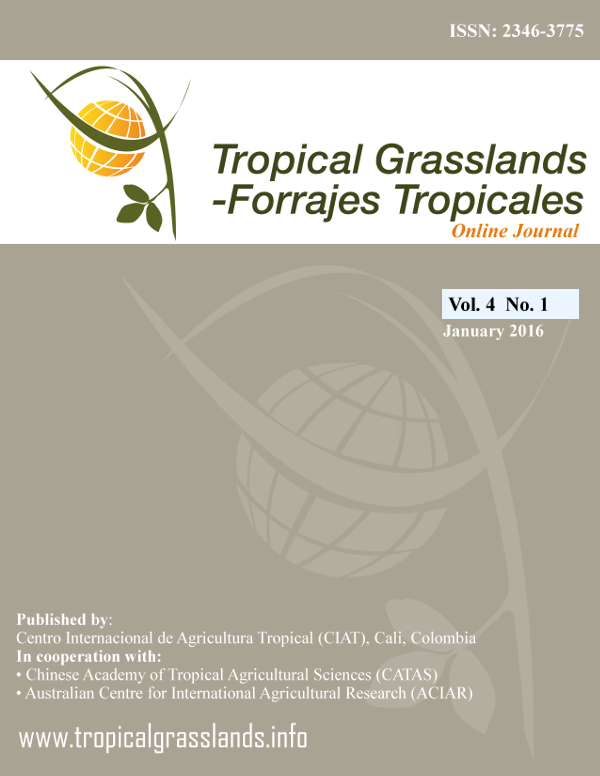Métodos de establecimiento de pasturas en zonas áridas de México utilizando semillas crudas o cariópsides
DOI:
https://doi.org/10.17138/tgft(4)29-37Abstract
In order to evaluate the establishment of the native grasses Sideoats grama (‘Banderita’, Bouteloua curtipendula) and Blue grama (‘Navajita’, B. gracilis) and the introduced grasses buffel (Cenchrus ciliaris) and Rhodes (Chloris gayana) at 2 sites in the Chihuahuan Desert, the use of caryopses vs. entire seeds (diaspores) was studied applying 4 methods of covering after broadcasting. The sites were Atotonilco El Grande, Hidalgo State; and Salinas Hidalgo, San Luis Potosí State, Mexico. One thousand viable seeds (caryopses or diaspores) were sown per square meter. The 4 methods of covering were: harrowing with a tree branch; use of a roller; use of a tree branch harrow plus roller; and no covering (control). The response variables measured were number of emerged seedlings; number of established plants; diameter of the crown; plant height; and number of stems per plant. The design was a completely randomized 2 x 2 x 4 factorial arrangement with 3 replicates at each site. There were no differences between sites and, on average, 2 plants/m2 were established. With the native species greater numbers of emerged and established plants were obtained by using diaspores while with introduced species there were no significant differences between caryopses and diaspores. Harrowing with a tree branch and/or rolling the soil resulted in thicker crowns and greater plant height. The highest number of stems per established plant were recorded in Blue grama and Rhodes grass. In native grasses it is important not to remove accessory bracts, in contrast with introduced grasses. In both species groups establishment is improved by rolling.
Keywords: Harrowing, introduced grasses, native grasses, plant density, seedbed rolling.
DOI: 10.17138/TGFT(4)29-37Author Biography
Filogonio Jesús Hernández-Guzmán, Universidad Politécnica Francisco I. Madero, Tepatepec, Hidalgo, México.
Ingeniero Agrónomo Zootecnista con el grado de Doctor en Ciencias, con conocimientos en producción de semillas de pastos, almacenamiento y establecimiento de pastos y cultivos forrajeros para zonas semiáridas, con 16 años de experiencia en producción animal y vegetal.




